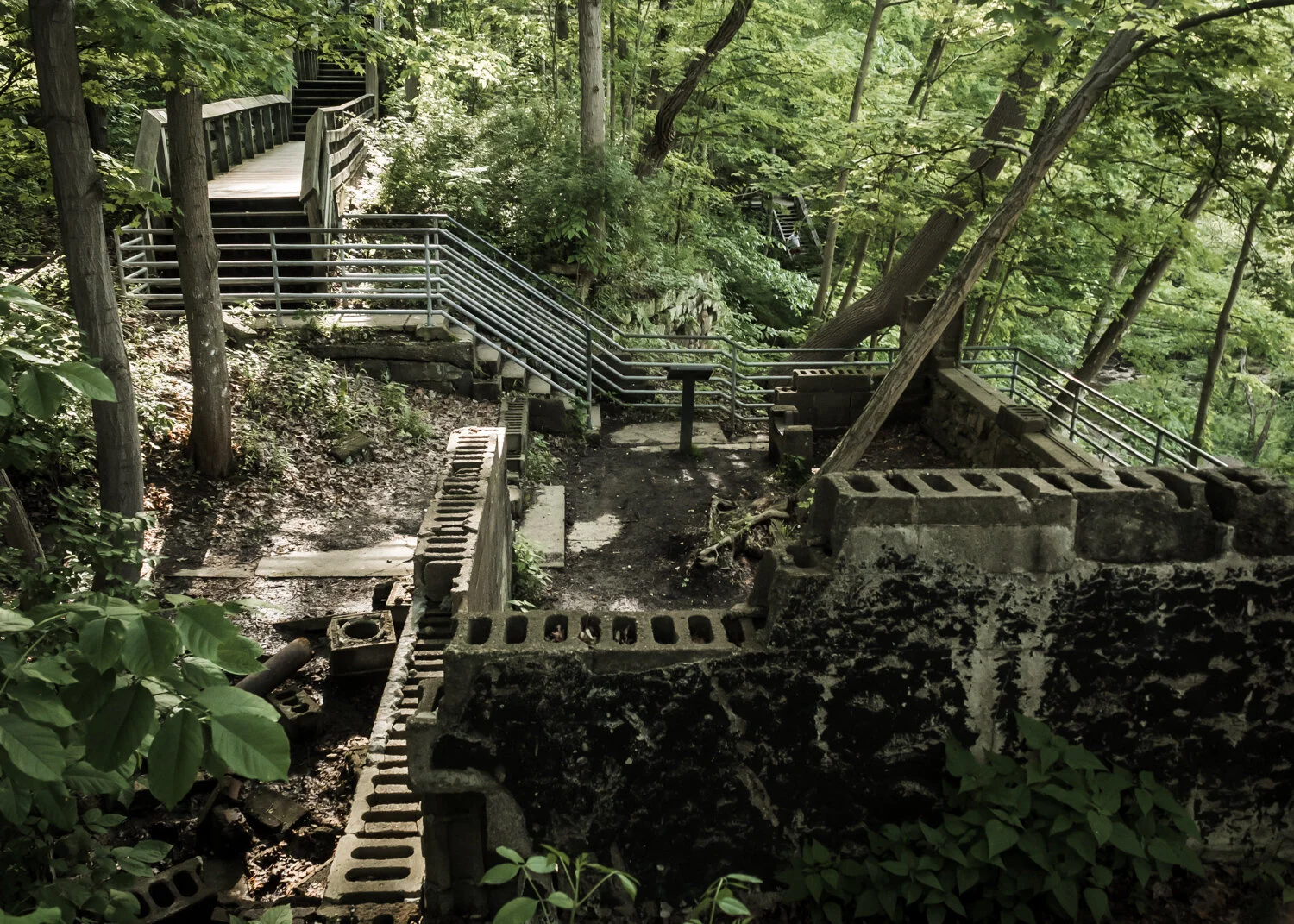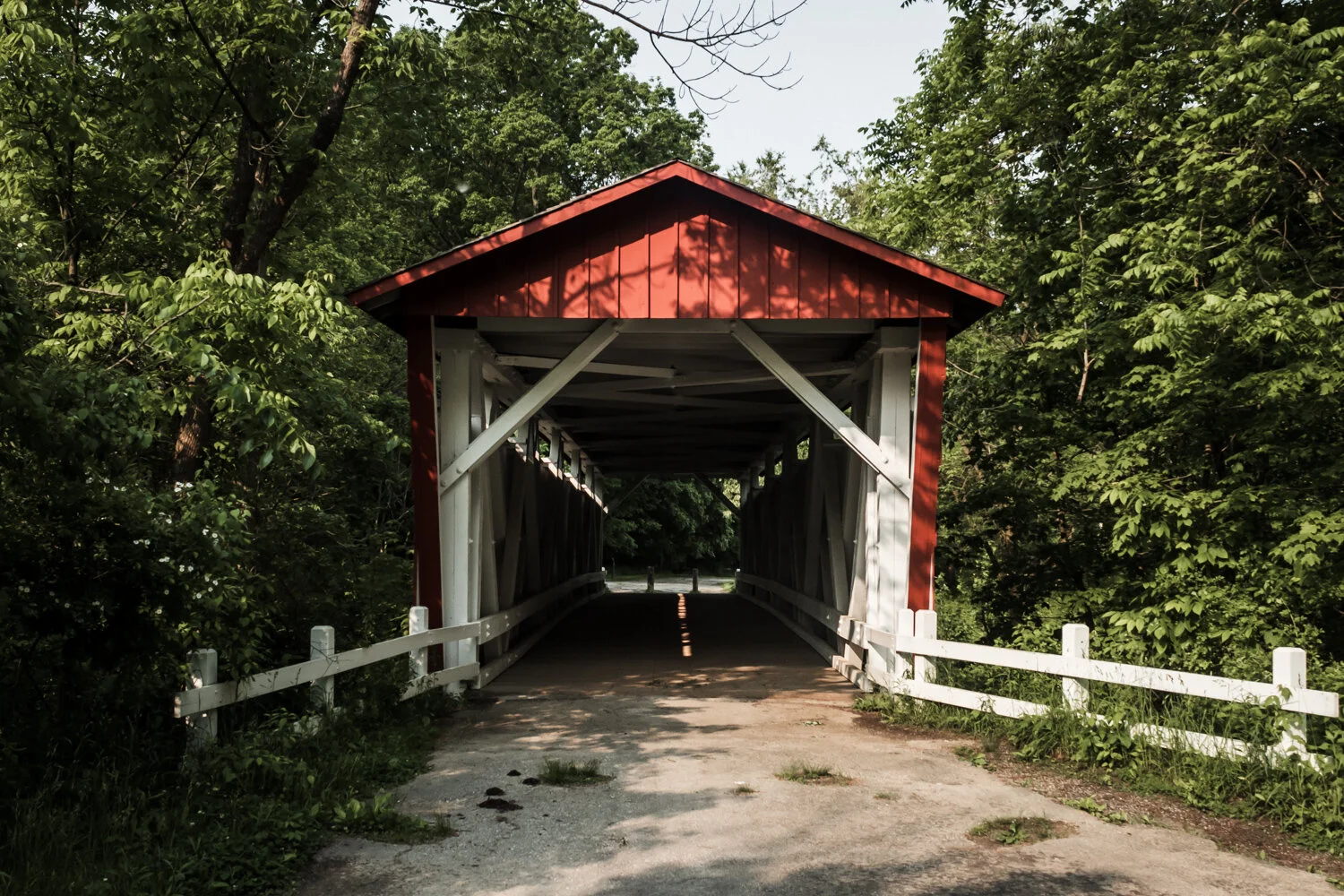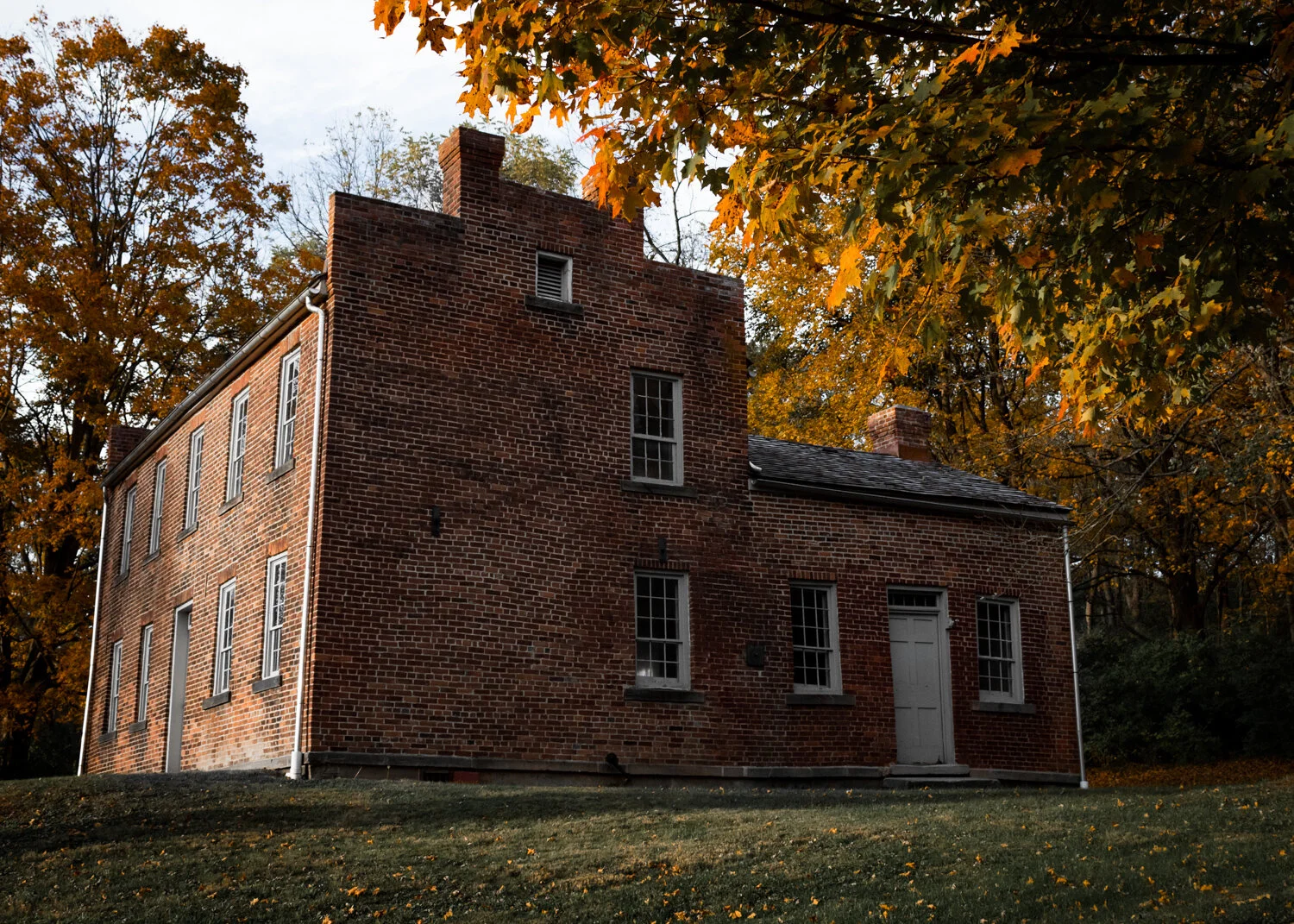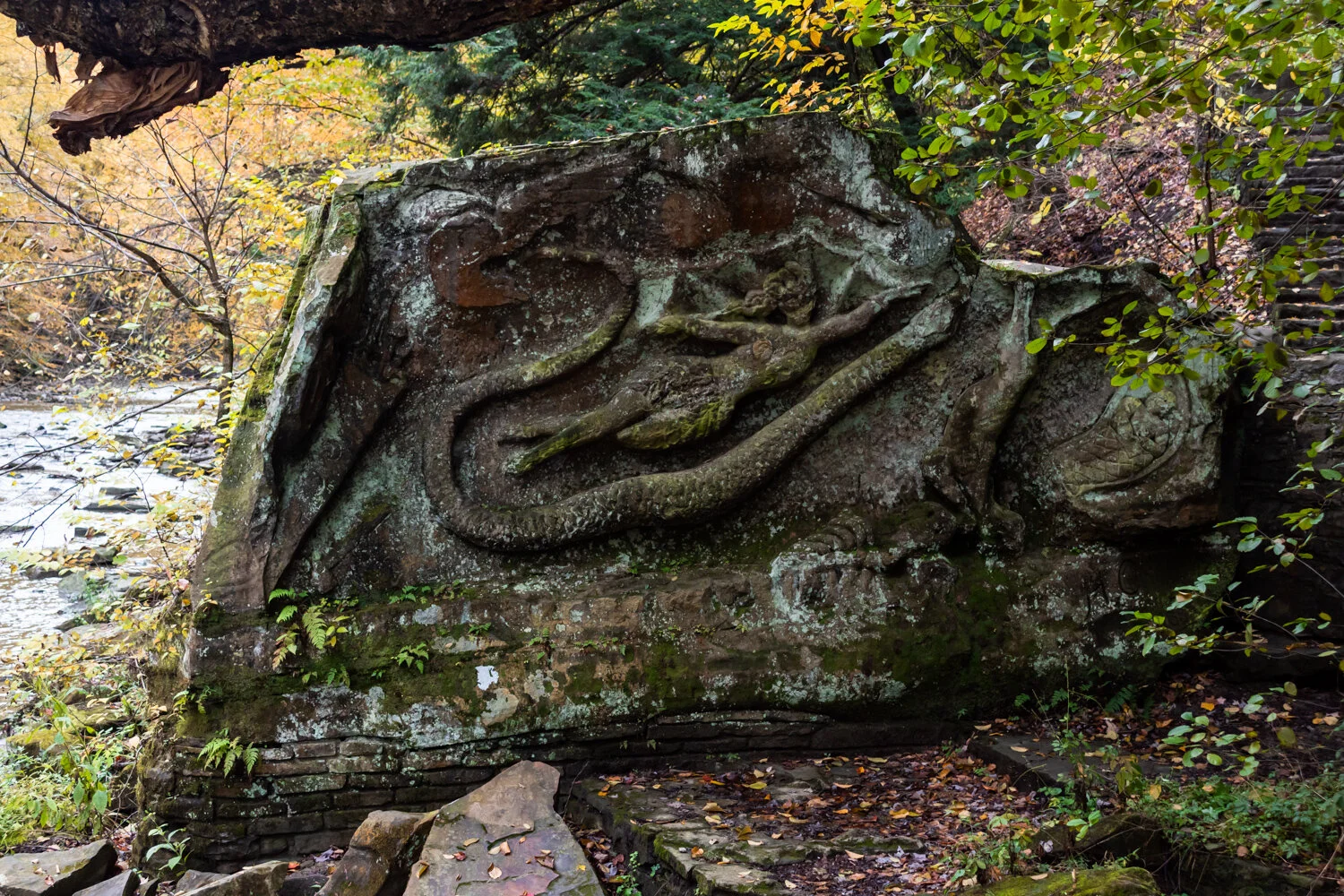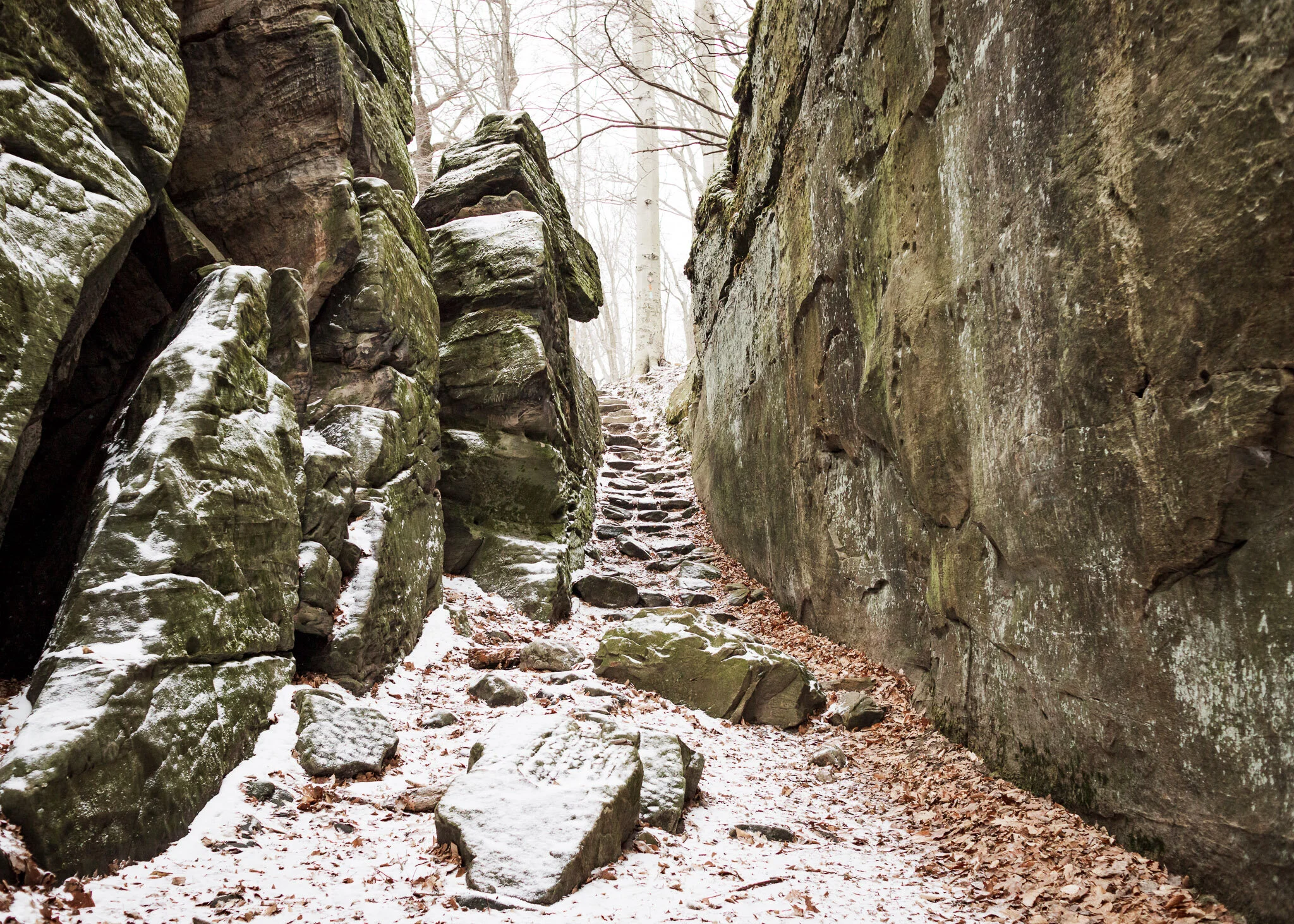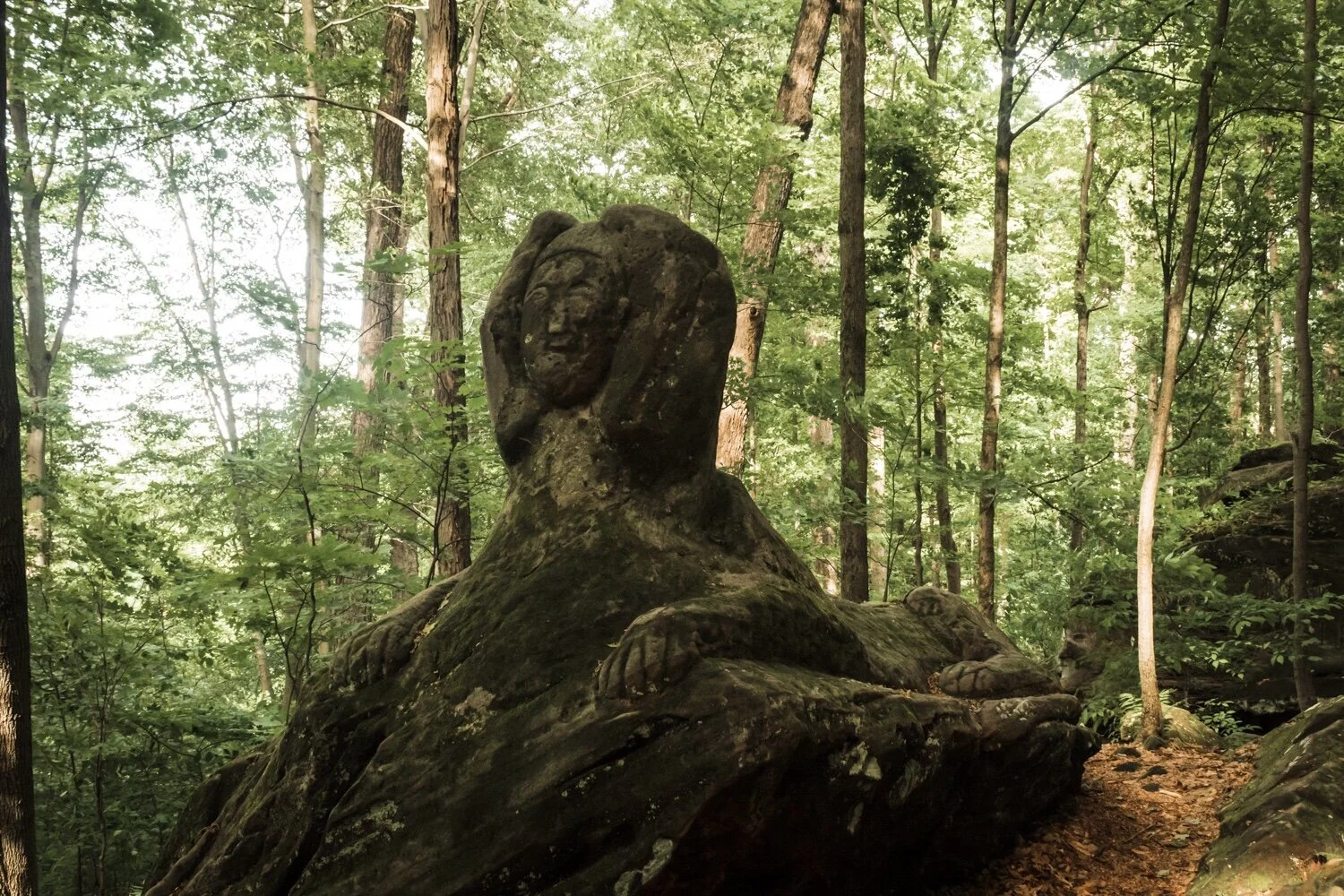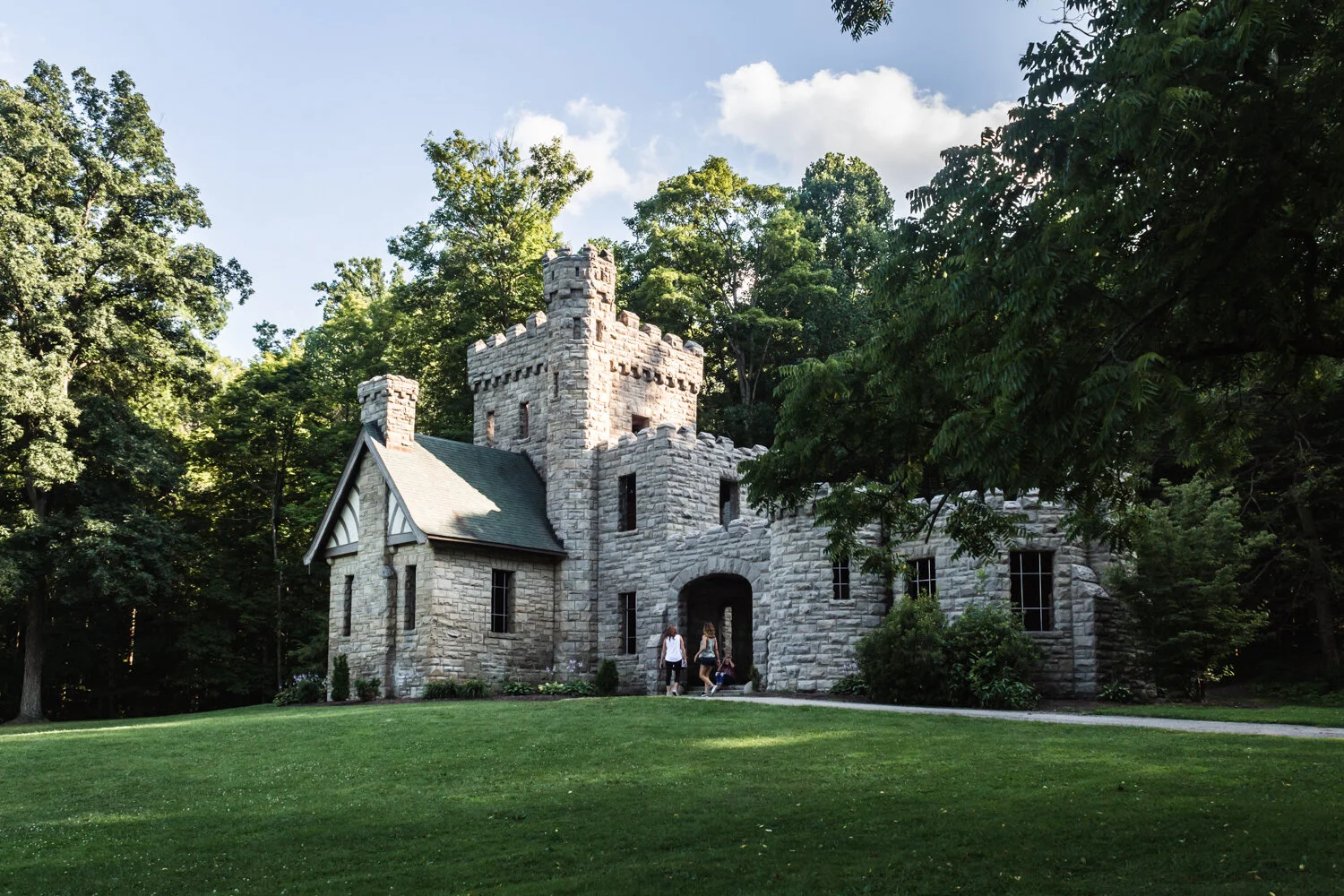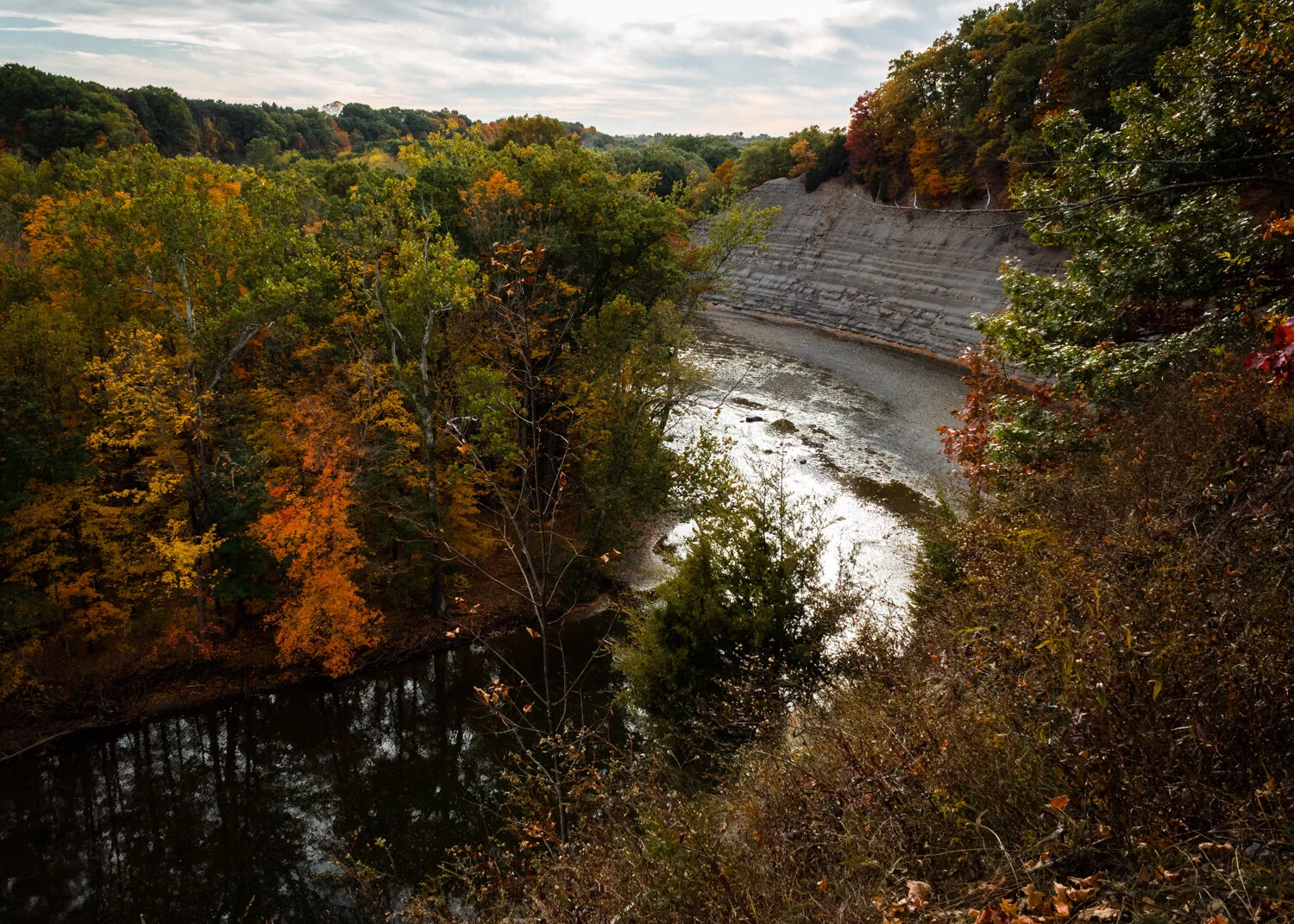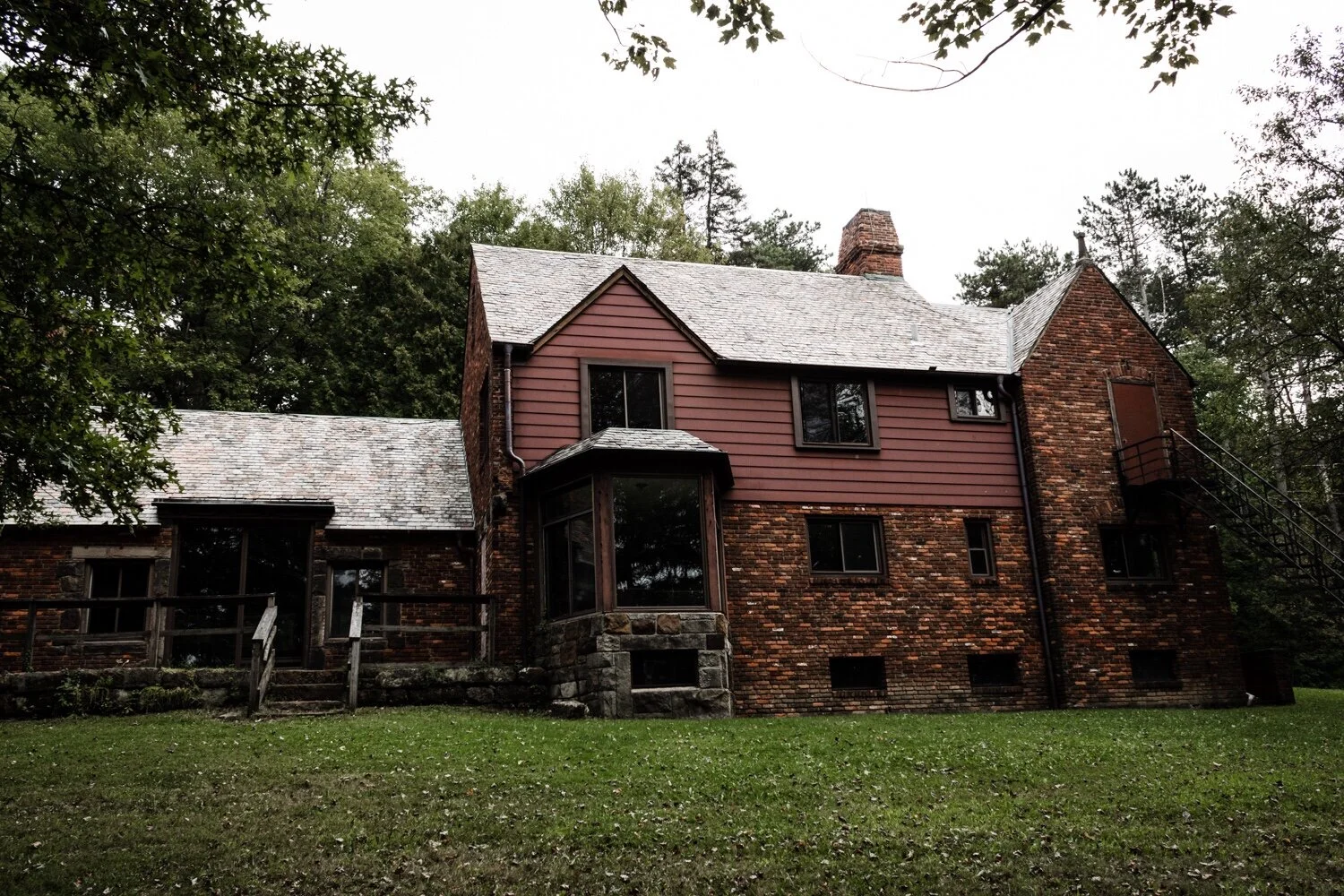Explore Northeast Ohio’s Park History
There’s so much history in our park system here in Cleveland, Ohio area that I had to make a whole blog post about it! We have tons of local reservations and a National Park filled with everything from man-made to natural history just waiting to be explored.
Our little National Park here in Northeast Ohio was what drew me to learn the history of sites in the parks. I always loved history, heck I have a degree in it, but I wasn’t really doing anything with it. But as I was exploring the park, I would see the trailhead signs sharing some history; intrigued, I went on to search for more and that sparked my desire to continue to learn about the places I explore. So here’s what I’ve learned so far…
Cuyahoga Valley National Park
Located between Akron and Cleveland, Cuyahoga Valley National Park is often forgotten about due to it being located in Ohio and since it’s a fairly new National Park, receiving the honor in 2000. But the park is filled with history, from natural to man-made, and is definitely worth checking out.
>> Related: The Complete Guide To Cuyahoga Valley National Park <<
Brandywine Falls
Back in 1814, Brandywine Falls was used for its power. George Wallace built a sawmill, and soon grist and woolen mills were built too. Eventually, the Village of Brandywine grew around this to become one of the earliest communities in the Cuyahoga Valley, only to fall apart with the construction of the highway. However, remains of the mills and Champion Electric Co. (which was destroyed by lightning) still linger, as well as George’s son’s home which is now the Inn at Brandywine Falls.
>> Related: 10+ Waterfall Hikes In Northeast Ohio <<
Virginia Kendall Ledges
The Virginia Kendall Ledges are named after coal industrialist Hayward Kendall who bought the land in 1913 from William Ritchie, who the Ritchie ledges you see here are named after. Kendall used the land for a hunting retreat. When he died in 1927, he wanted his wife to make sure the land became the "Virginia Kendall Park," named after his late mother. Two years later, his wife gave 530 acres to the state of Ohio on the condition it was to be used as a park only. The Ledges are of Sharon Conglomerate, which ancient seas and streams brought the sand and quartz pebbles. You can even see the waves of the ancient sea in the ripples of the ledges. Be careful with the ledges though, climbing is not allowed for obvious reasons.
Everett Road Covered Bridge
Everett Road Covered Bridge is the only remaining covered bridge in Summit County, where there used to be over 2,000 in Ohio in the 19th century. Back in 1877, a couple needed to cross Furnace Run, but due to the weather, they had to pass around the ford which caused the wife to be thrown into the stream. She was rescued but the husband lost his footing and fell, only to be dragged deeper by his horse and recovered days later. The construction date is unknown, so there’s no way of knowing if this was built in response to the tragedy or not, but it’s believed to have been built before the 1870s. When it comes to Everett road, workers found a burial mound with a tomb containing the remains and belongings of Native Americans from the Hopewell Culture, 1500-2100 years ago. While not creepy during the day, this bridge is no doubt a little creepy at night. There’s also rumored to be a ghostly hitchhiker between the road and the bridge.
Frazee House
Frazee House is a lesser-known historical house here in the park. The Cuyahoga Valley was a frontier that American’s wanted to expand to in the 1800s. Steven and Mehitable Frazee bought 190 acres in the Valley and provided a life for themselves. Frazee is a unique, brick, two-story home and was one of the first here in the Valley. Fun fact: Stephen actually sued the State of Ohio when the Ohio + Erie Canal cut his property in half and it’s believed the settlement was used to build the home. Frazee House is on the National Register of Historic Places.
Ohio & Erie Canalway / Canal Locks
Canal Locks were a major aspect of the Valley’s history, and Ohio’s. In 1827, the Akron to Cleveland part of the canal opened, where workers from all over moved to the area for work. The local towns of Peninsula and Boston boomed with boat building. The canals also helped make the area more civilized. But with the building of railroads, the canal's success didn’t last very long, especially after the Great Flood of 1913. The Ohio & Erie Canalway is still a sight to see and is a National Heritage Area. Today you can visit the Canal Exploration Center to learn all about it through interactive maps and games, and more. The center actually used to be a tavern, a general store, a residence, and a park visitor center before becoming a recent addition to the park.
Cleveland Metropark Reservations
Located all over the greater Cleveland area, the “Emerald Necklace” is probably the best park system, and the oldest, in the state of Ohio. There’s 18 reservations, golf courses, a zoo, and more to see. William Stinchcomb suggested the idea in 1905 for an “outer chain of parks with connecting boulevards” and it finally began in 1912. The 1920-30s is where the park began to form its current shape. The Cleveland Metropolitan Park District partnered with the Cleveland Museum of Natural History in 1930 to create the outdoor program, bringing park naturalists, trailside museums, nature programs/hikes, and nature centers.
>> Related: Cleveland Metroparks: Hiking Guide <<
Henry Church Rock “Squaw Rock”
One of the main sites to see when visiting the South Chagrin Reservation is the Henry Church Rock, or “Squaw Rock” to the locals. This trail will also lead you past a few hidden waterfalls before reaching the wide and well-known Chagrin River waterfall (not to be confused with the waterfall in the city of Chagrin Falls). Squaw Rock was carved by Henry Church in 1885 at night; there’s many different carvings into this boulder. They include a quiver of arrows, the 4 phases of the moon, a giant serpent, an eagle, a woman with a shell, a dog and a skeleton, and a baby in a papoose. Some say the meaning of the carvings is unknown while others say it was meant to condemn American policy towards American Indians. To reach this rock, you park at the Henry Church Rock Picnic Area and then take the trail along the river; there’s two different routes you can take but both will lead you to the river rock.
Whipp’s Ledges
On the east side of the Hinckley Reservation lies the Whipp’s Ledges. The size of the ledges here is what stood out to me right away… they’re huge! The ledges tower 350 feet above Hinckley Lake after being formed more than 250 million years ago. There’s also different types of plants and trees and other ecosystems here that’ll excite the nature lover. The Whipp’s Ledges were owned by Robert Whipp, who wanted to fulfill the American Dream after moving here in 1848 from England. Like the ledges, he was compared to a giant, due to being a large man with a strong voice. An honest man working in the butchering business. He was so successful, that his second wife actually tried to murder him to get his estate for herself! At the height of his business, he owned 10 plots of land totaling almost 2,000 acres. But inevitably the economy went south, so when he died in 1890, his land was mostly sold to pay off his debts. The ledges, like most of northeast Ohio, are comprised of Sharon Conglomerate Sandstone.
Worden’s Ledges
At the bottom of the Hinckley Reservation lies Worden’s Ledges. Most of the carvings are easy to spot, although there’s quite a few that you won’t notice at first and you’re most likely going to find a new one each time you visit. It’s a decent hike down to the carvings, and the trail can get confusing especially after you pass the carvings, but you should be able to figure it out as long as the trail has been walked on recently. The Worden’s Ledges area reflects when Hinckley Township was being settled in the Western Reserve. In 1851, Hiram Worden purchased 56 acres from a judge in the Connecticut Land Company. Fast forward 11 years and Hiram completed the homestead where he and his second wife raised their four children, Cora, Frank, Floyd, and Nettie. In 1903, Nettie inherited the homestead and her third husband was Noble Stuart, who was actually responsible for carving the ledges.
Squire’s Castle
The North Chagrin Reservation has a castle here. What else do you need to convince you to come? Okay, the remains of a castle, but still. Simply park at the lot and walk the short distance to Squire’s Castle and the trails. There’s also a huge field in front of it for relaxing or picnics or whatever your heart desires. Squire’s was built in the 1890s by Feargus B. Squire; it was built for his gatekeeper for his future country estate. Squire was an executive with the Standard Oil company. Since he never built the estate, the Metroparks acquired the land in 1925 and removed the two upper floors, and filled the basement. All that people are able to visit now is the ground floor. The castle is reportedly haunted by Squire’s deceased wife, Rebecca. It’s said that she tripped and broke her neck in the castle, but in reality, she died elsewhere after the property had sold.
Fort Hill Earthworks
Rocky River Reservation is one of the most popular reservations here in Cleveland, due to the abundant amount of things to do and the size of the park, and it’s located so close to Lake Erie. Rocky River is home to one of the largest fishing areas in the country and has one of the best Nature Centers in the park system in Northeast Ohio. It’s also got some cool history, most notably the Fort Hill Earthworks. The Earthworks are on the National Register of Historic Places and are believed to have been made over 2,000 years ago by Early Woodland Indians, most likely for ceremonial or spiritual uses, not defense. Earthworks are a set of “three human-made long, earthen walls and ditches” and this one was built on a shale cliff 90 feet above the Rocky River. Earthworks take time to build, are tightly packed to withstand erosion. To view this, you have to climb the Fort Hill Steps, rebuilt in 2016 because of safety reasons, up 90 feet for stunning views of the Rocky River. Some more historical spots include the Frostville Museum, an interesting spot to check out if you like living history museums. It consists of eight different buildings and shows the living history of the 19th century. The Smoky Memorial celebrates the world’s first therapy dog (on record). Smoky was a little Yorkshire Terrier who helped aid WWII troops. The Stinchcomb-Groth Memorial is where you can learn a lot about the first two directors of the Cleveland Metroparks. In 1905. Stinchcomb wanted to avoid stuffy parks and decided to acquire open land along rivers for people to enjoy, and thought city parks would not be enough. It was he who thought of the “Emerald Necklace” idea that would showcase the beauty in Northeast Ohio.
>> Related: Where To View The Fall Foliage In Northeast Ohio <<
Summit Metro Parks
The Akron Metropolitan Park District was created in 1921, just a few years after the National Park Service was established and Ohio allowed for the creation of these metropolitan parks. Frank A. Sieberling, the founder of the Goodyear Tire & Rubber Company, hired the Olmsted brothers to be the architects. Every year since the mid-1960s, SMP holds the Fall Hiking Spree, one of the most popular events in the nation of its kind. Today the park has 16 reservations and a few conservation areas.
>> Related: Summit Metro Parks: Hiking Guide <<
Mary Campbell Cave
In the Gorge Metropark, you’ll find the Mary Campbell Cave, where (according to folklore) you can see where the Delaware Indians captured a young girl in 1759 from Pennsylvania where she would live with Chief Newcomer's village in a cave along the Cuyahoga River; the cave would eventually get named after her. American Indian tribes in Ohio tended to take white women and children, believing they would be easier to assimilate them into their culture. The tribe was forced to migrate west, ending up in the Ohio Country, where they would form a temporary alliance with the French. Mary Campbell was the first white child in the Connecticut Western Reserve. She was released after seven years when the Treaty of Paris ended the French and Indian War. The cave itself was formed when thousands of years ago the river was blocked and had to change paths, and was originally named Old Maid’s Kitchen.
*Updated 10/9/19: Summit Metro Parks is looking to change the name back to Old Maid’s Kitchen. Although Mary was a real person, research in the last decade shows that it was very unlikely people lived in this cave nor are there any documents proving she was there. Archaeological research done shows that the cave floor is much wetter and is a slope, which would not be an ideal place for a long-term stay.
Indian Signal Tree
Also in the area is, near the Cascade Valley parking lot, lies an unusual looking tree, the Indian Signal Tree; a 300-year-old bur oak, uncommon for northeast Ohio, and it marked the northernmost point of the Portage Trail, to connect the Cuyahoga and Tuscarawas rivers. The Shawnee, Ottawa, Mingo, Delaware, Erie, and Seneca tribes traveled this route to the Ohio River and then carried their canoes 8 miles south to Summit Lake.
Richfield Heritage Preserve
The Richfield Heritage Preserve is 336 acres filled with lakes and trails, and some cool historical structures that were once homes to the Richfield pioneers in the early 1900’s. Definitely a hidden gem here in Northeast Ohio. It’s also a lot of Girl Scout’s history after they purchased the property.
To start, Jim Kirby was an inventor who wanted to eliminate "the drudgery of housework" and received over 160 patents for his inventions but was best known for his washing machines and vacuum cleaners. He bought the Oviatt farm in Richfield in 1919, building his house and dam the following year. Over the next few years, he constructed the dam across two incoming creeks, which created the artificial lake, as well as a mill, the dance hall, a boathouse, and a floating picnic shelter on the lake. The lake was actually patented for the way it was built; it allowed the stormwater to be diverted and keep the lake clear. Kirby eventually sold the entire estate to the Cleveland Girl Scout Council in 1936.
Kirby’s Mill
Kirby’s Mill is located on the country’s only patented lower lake. The lower lake was designed to “eliminate sediment deposits in order to prolong the life of the lake.” Although currently the lake is drained for construction. The mill was also the first if its kind, water-powered to produce hydroelectric power for his home and workshop. It was built so that it could run even with a small amount of water. It was made of cypress spokes and rims, and oak for the buckets, and its weight rests on the ball bearings. It was placed on the National Register of Historic Landmarks in 1978. As for the Girl Scouts, when they purchased the property, it became a crafting center and later museum for the National Bicentennial in 1976. The mill was so significant, that the Girl Scout Councils for Lake Erie and Cleveland named their newsletter’s after it, naming it the Millwheel.
Garfield House
In 1923, Kirby built the Garfield House, which was a chestnut-sided dance hall, supposedly for his daughter’s 16th birthday. It’s interesting because the floor is built on heavy-duty streetcar springs from Cleveland, which made the floor bounce when a group of people danced on it. The name Garfield came later in 1937, named after the Chairman of the Girl Scouts camp committee; Kirby just called it “the cabin” or “the lodge.” Ever the inventor, Kirby invented the “vacuette,” a vacuum cleaner around 1920 with his business, the Kirby Company. The Vacuette Company held their annual picnic in the home, with a procession of cars. It was the first major event to be hosted here, and the Alpha Motion Picture Company of Cleveland captured the festivities and the film was developed overnight to be shown at the Cleveland Yacht Club the next day for the company. As for the Girl Scouts, this building was used as the dining hall until Gund Hall was built in the ’60s.
North House
With construction beginning in 1928, the North House was built a few years after the lake began to form. The home is locked up, but apparently, the inside resembles an inverted ship’s hull. The outside looks like a medieval manor home. The antique-looking bricks are actually from some of the original buildings from around Public Square in Cleveland.When the Cleveland Girl Scouts bought the property, they used it for training and conferences for the adults, and troops could camp there as well.
Amity House
The Amity House is located nearby the Coach and North Houses in the preserve near Lake Linnea. The French Normandy style building and was built in 1936 as a wedding gift to some of the Neal children. The Neal's owned Neal Storage Company here in Cleveland with orchards in Richfield, soon becoming the Neal Fruit Farm. But in the 1950s, there was crop failure and they had to sell it, and the Girl Scout's bought the property in 1957 as an adult training facility.
Other buildings to see here include The Coach House, Oviatt House, and the Summer Barn.
Other Historical Sites to See
Richard Howe House
Hale Farm & Village
Historic Cleveland Coast Guard Station
You Might Also Like
Cleveland’s Best Historical Spots
Northeast Ohio: The Fall Hiking Guide



